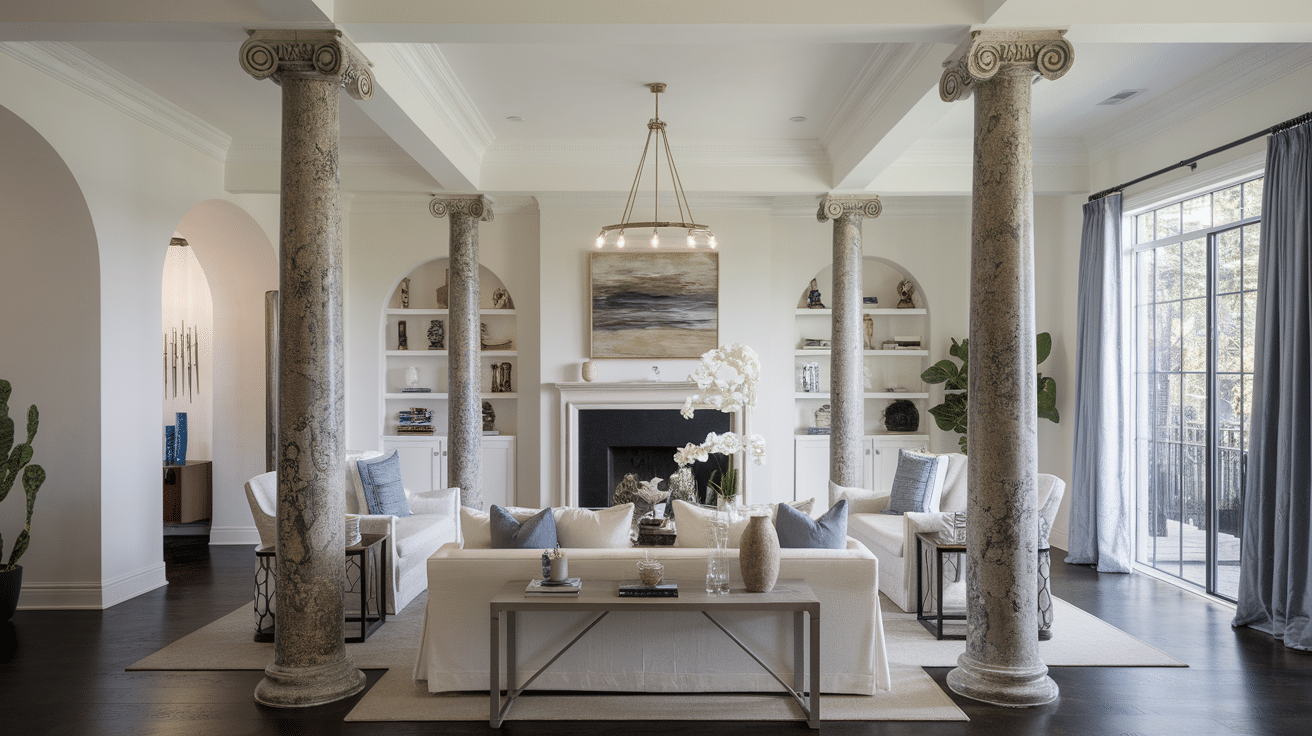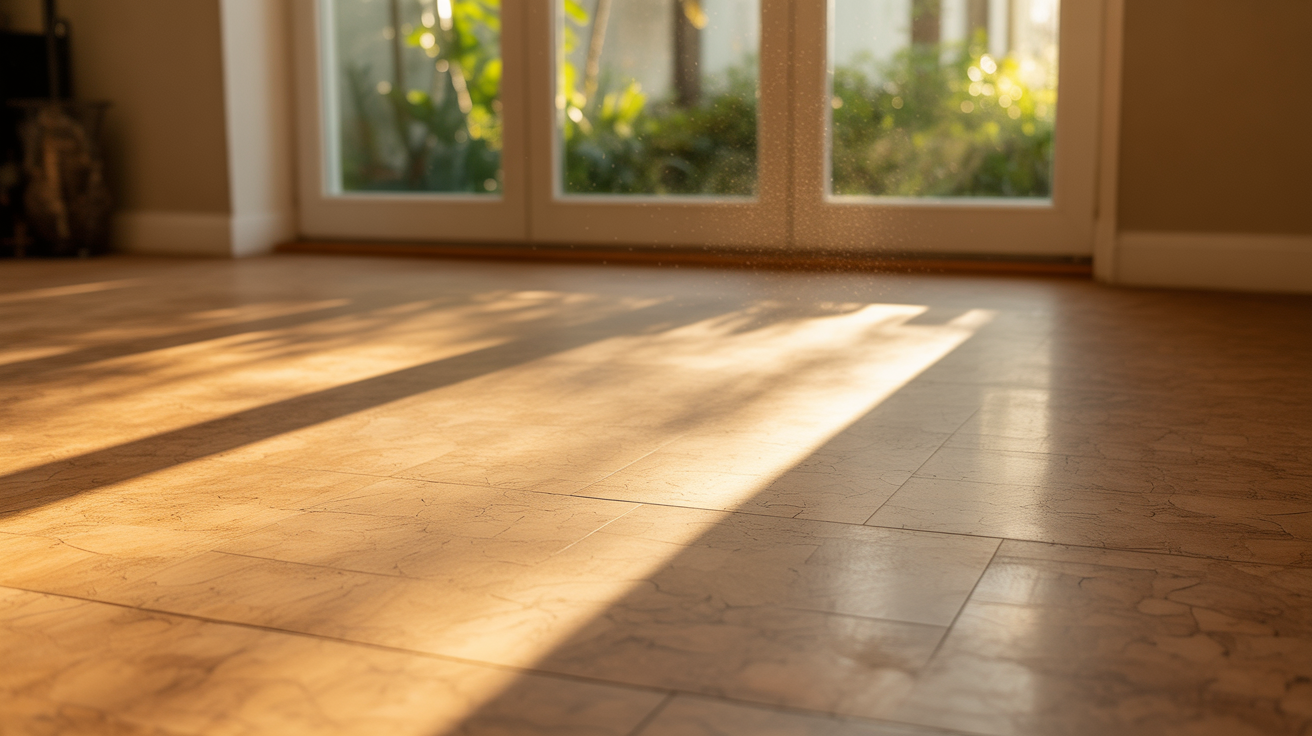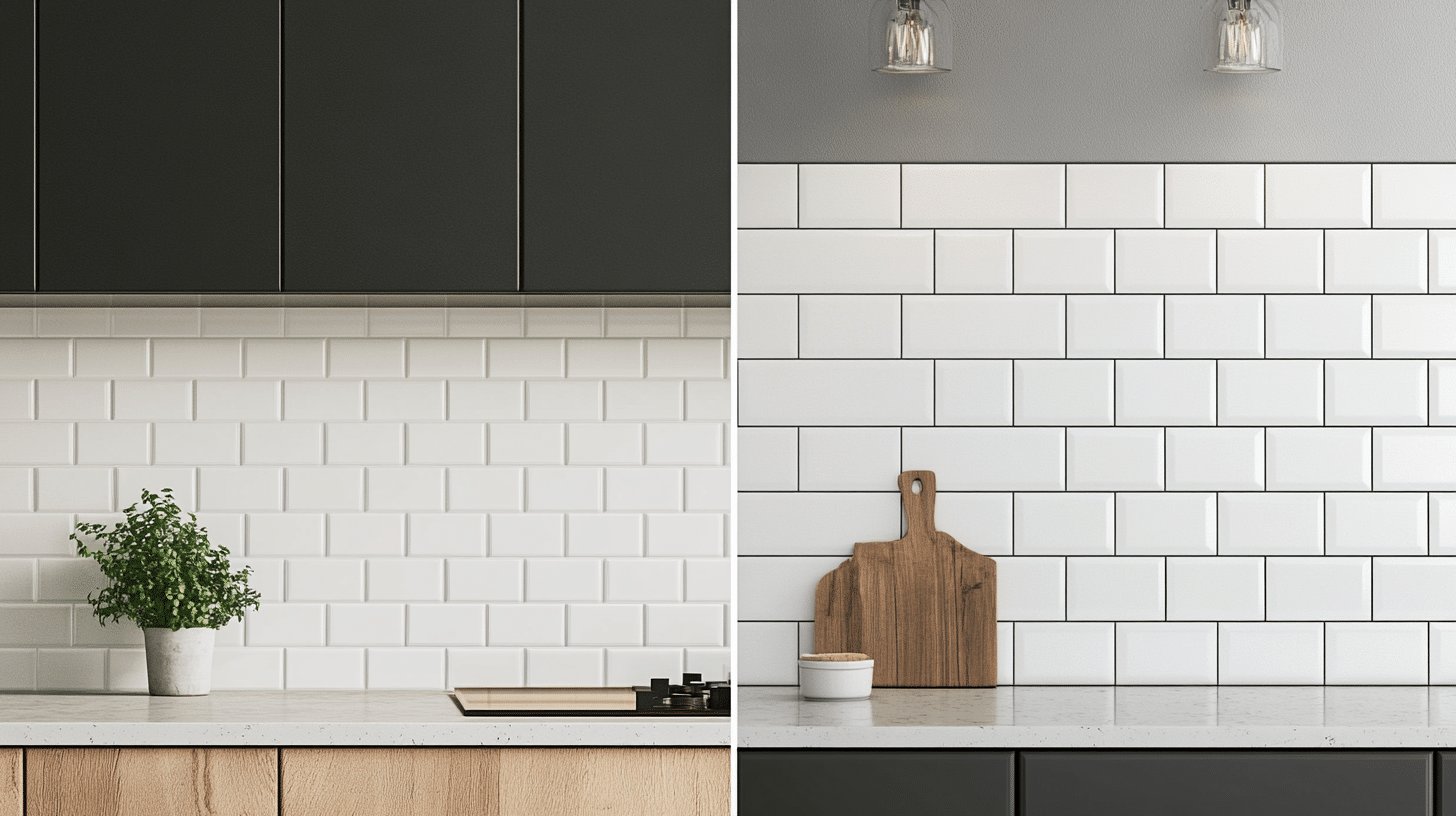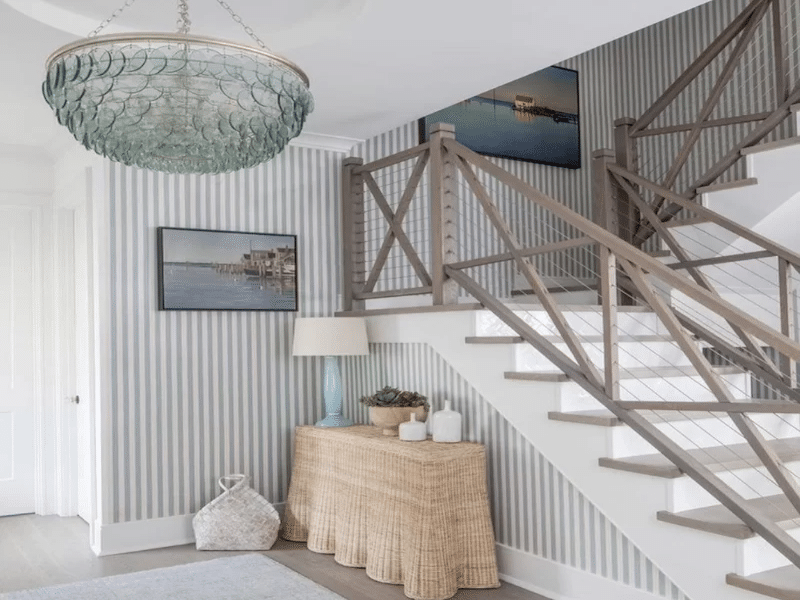27 Creative Interior Columns Ideas for Home Design
Are you struggling with an open floor plan that feels too disconnected or lacks structure?
Interior columns can be the perfect solution. These useful design elements not only provide support but also add style, character, and definition to your space.
Columns can help you separate areas in a large room or create a focal point.
In this blog, we’ll look at different types of columns, creative ways to use them, and how to choose the right materials for your home.
Want to make your columns stand out? Keep reading to see how these simple elements can change your space.
Types of Interior Columns
Interior columns come in various styles, materials, and designs to match different home themes. Each type offers its charm and can serve both structural and design purposes.
The right column choice depends on your home’s overall look, the room’s function, and your taste.
1. Wooden Columns

Wooden columns bring warmth and natural charm to homes with traditional and rustic settings.
These solid wood structures often feature detailed carvings and rich grain patterns that highlight skilled craftsmanship.
They work well in entry halls, living rooms, and dining areas, where their timeless appeal connects with wooden floors and furniture.
2. Faux Wood Columns
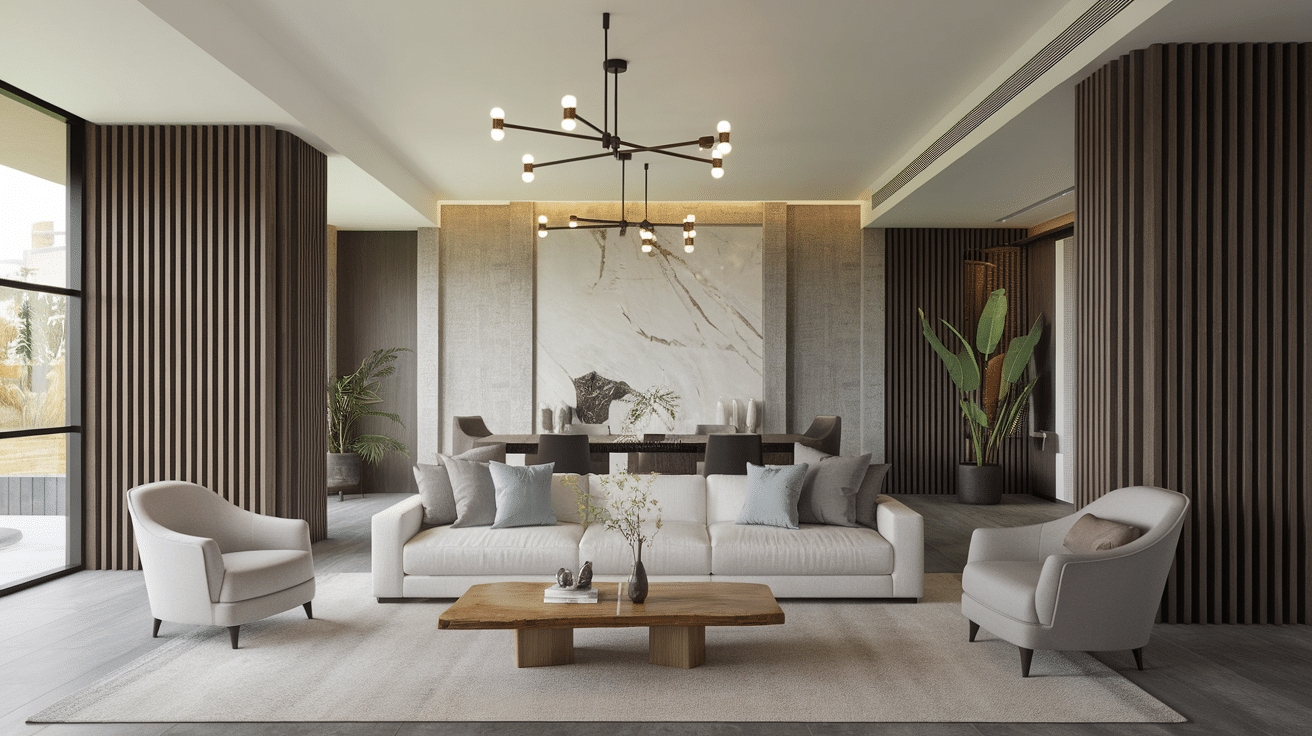
Faux wood columns offer the look of real wood with added benefits. Made from PVC, polyurethane, or other materials, they resist moisture, insects, and warping.
These columns need little upkeep while still giving your space the visual impact of wood. They’re lighter than real wood, making them easier to install in modern homes.
3. Fluted Columns
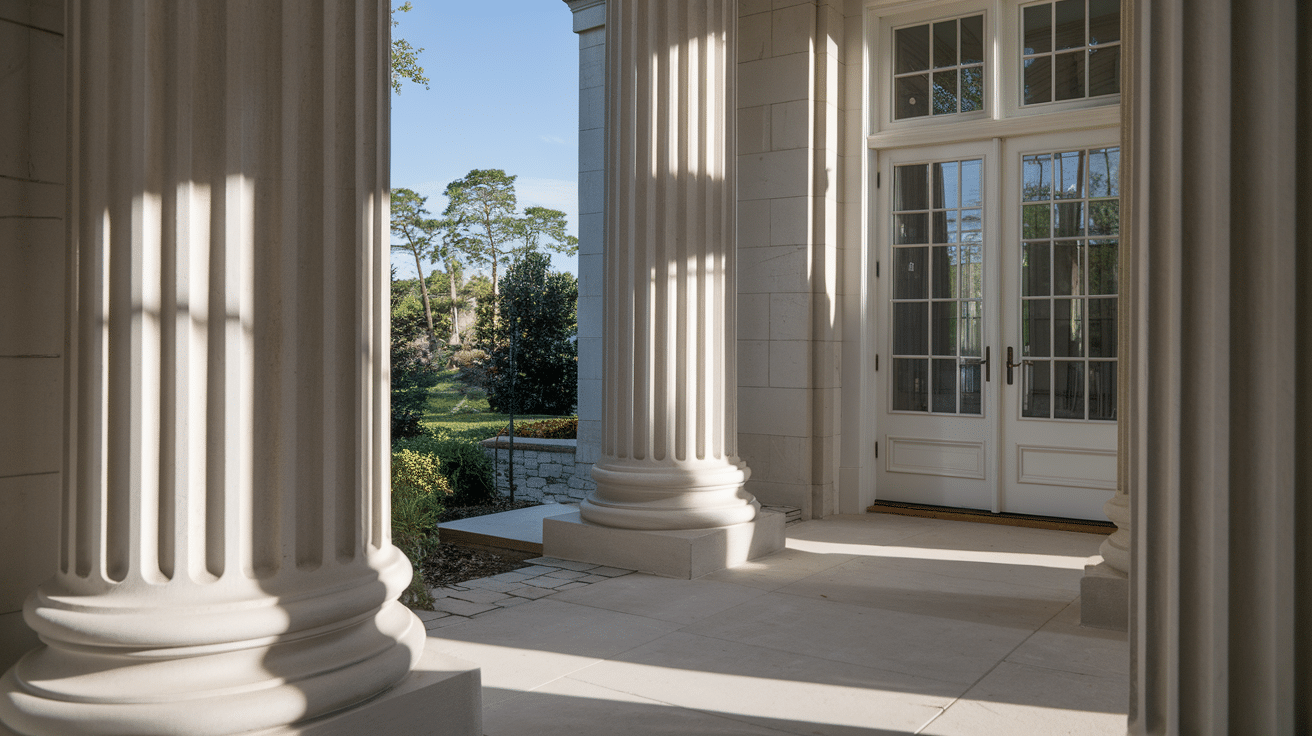
Fluted columns feature vertical grooves running along their length, adding texture and visual interest to any room.
These classic design elements bring a sense of order and formality to spaces.
The grooves create shadow lines that change throughout the day as light moves across the surface, giving the column’s appearance of depth.
4. Square Columns
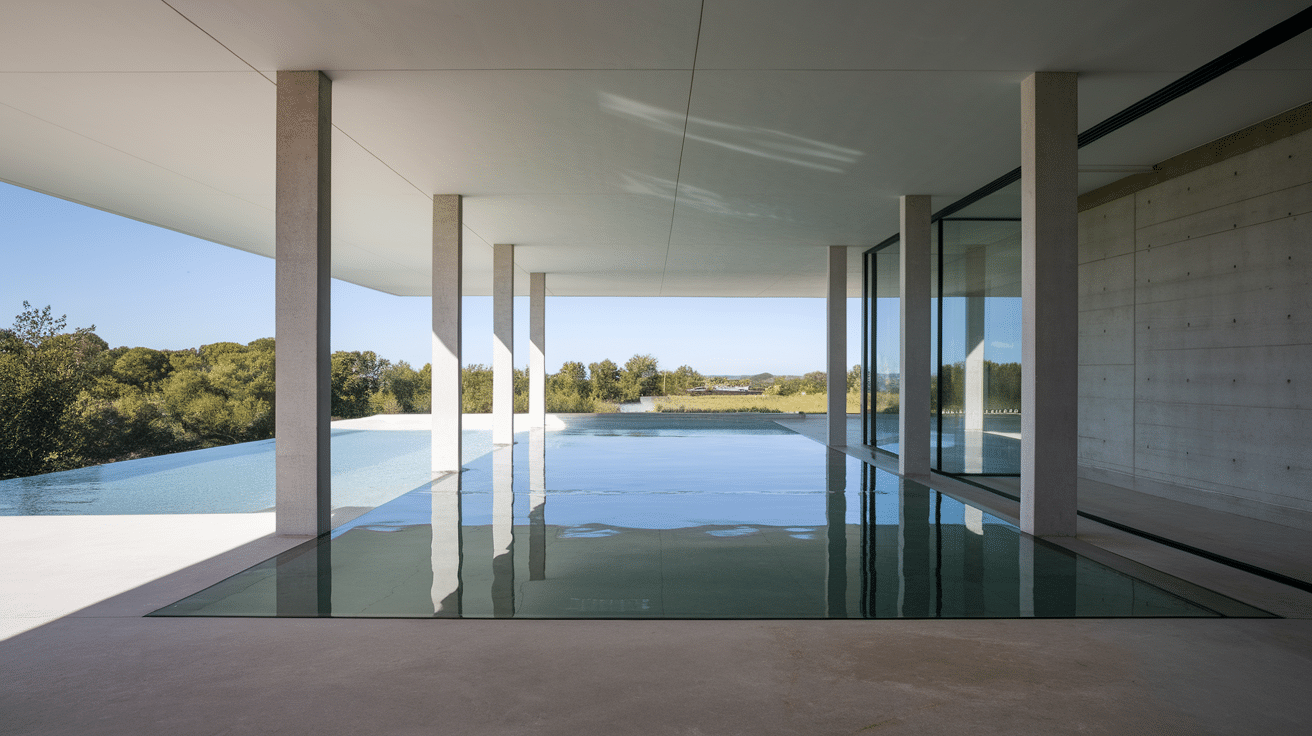
Square columns offer clean lines and a sleek look that fits well in modern homes.
Their simple shape works with current design trends and creates clear visual boundaries between spaces.
These columns can be made from various materials, including wood, metal, or stone, and their straight edges help define spaces without fussy details.
5. Decorative Pillars
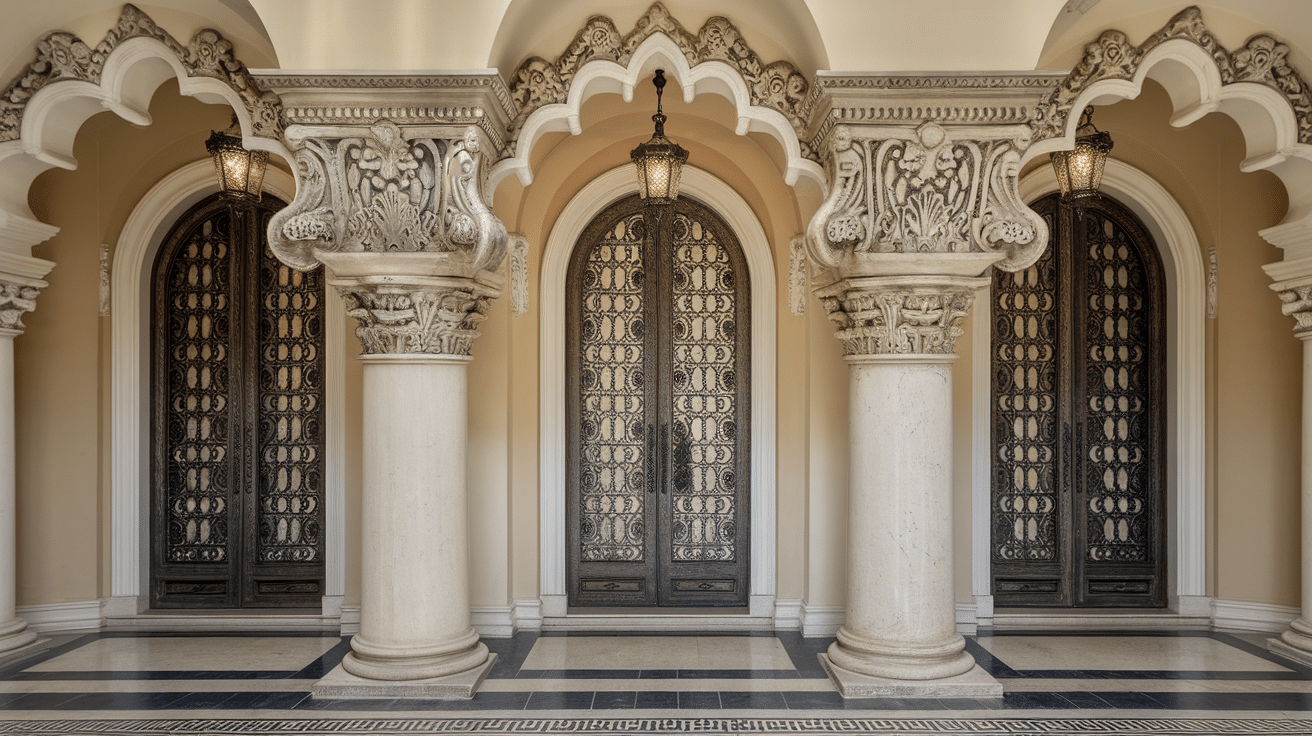
Decorative pillars serve as striking visual elements in your home. Unlike strictly structural columns, these are often placed purely for their looks.
They can feature ornate capitals (tops), bases, and middle sections with carvings, inlays, or special finishes.
Many homeowners use them to mark entryways or create visual anchors in large rooms.
Creative Interior Column Ideas
Here’s a collection of practical and imaginative ways to use columns in your home.
These ideas will help you see columns not as obstacles but as chances to improve your living spaces with both style and purpose.
1. Columns as Room Dividers

Columns create natural divisions between living areas while maintaining an open feel. Unlike solid walls, they define separate zones without blocking light or views.
Place them strategically to mark the boundary between your living room and dining area or to frame an entryway.
They give structure to open floor plans without the closed-in feeling of full walls.
2. Decorative Columns in Entryways
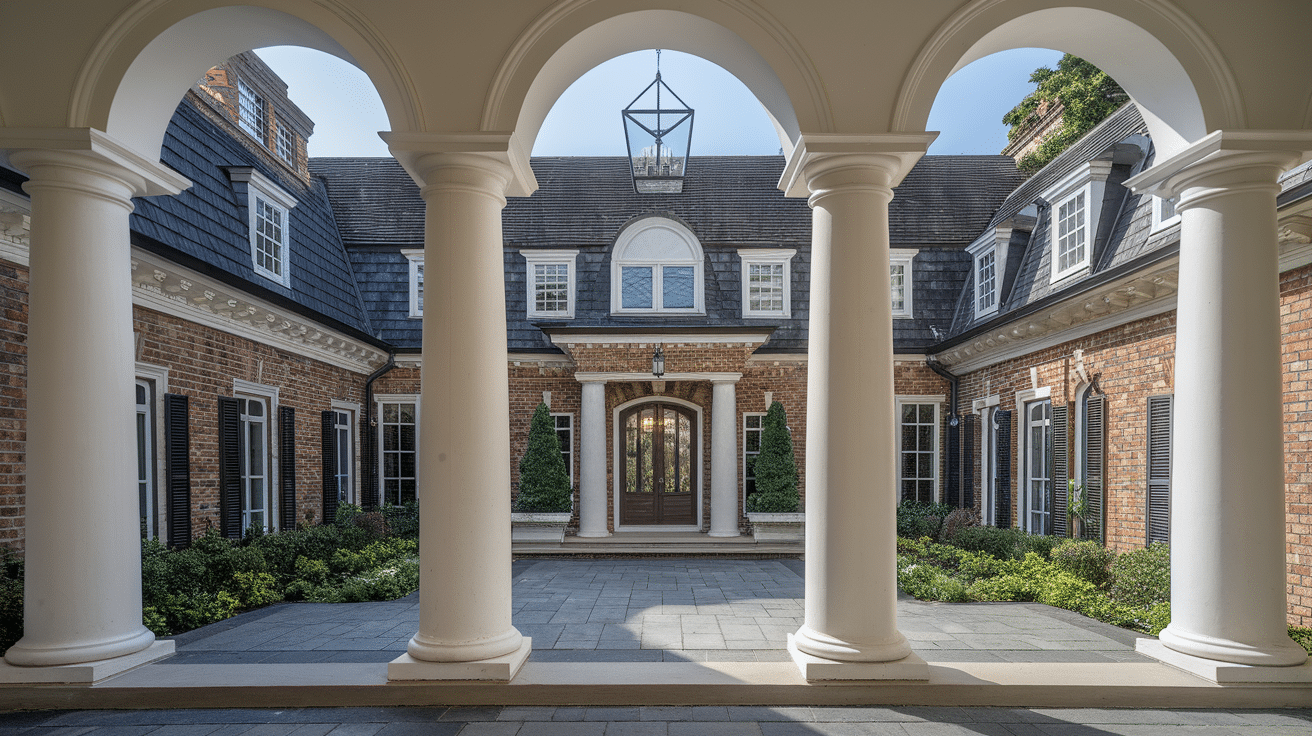
Entry columns create a lasting first impression. They frame your foyer and establish your home’s design theme from the moment guests arrive.
If paired to mark a grand entrance or used as single statement pieces, these columns add structure and importance to transitional spaces.
For maximum impact, match their style to other architectural elements in your home.
3. Columns Framing a Fireplace
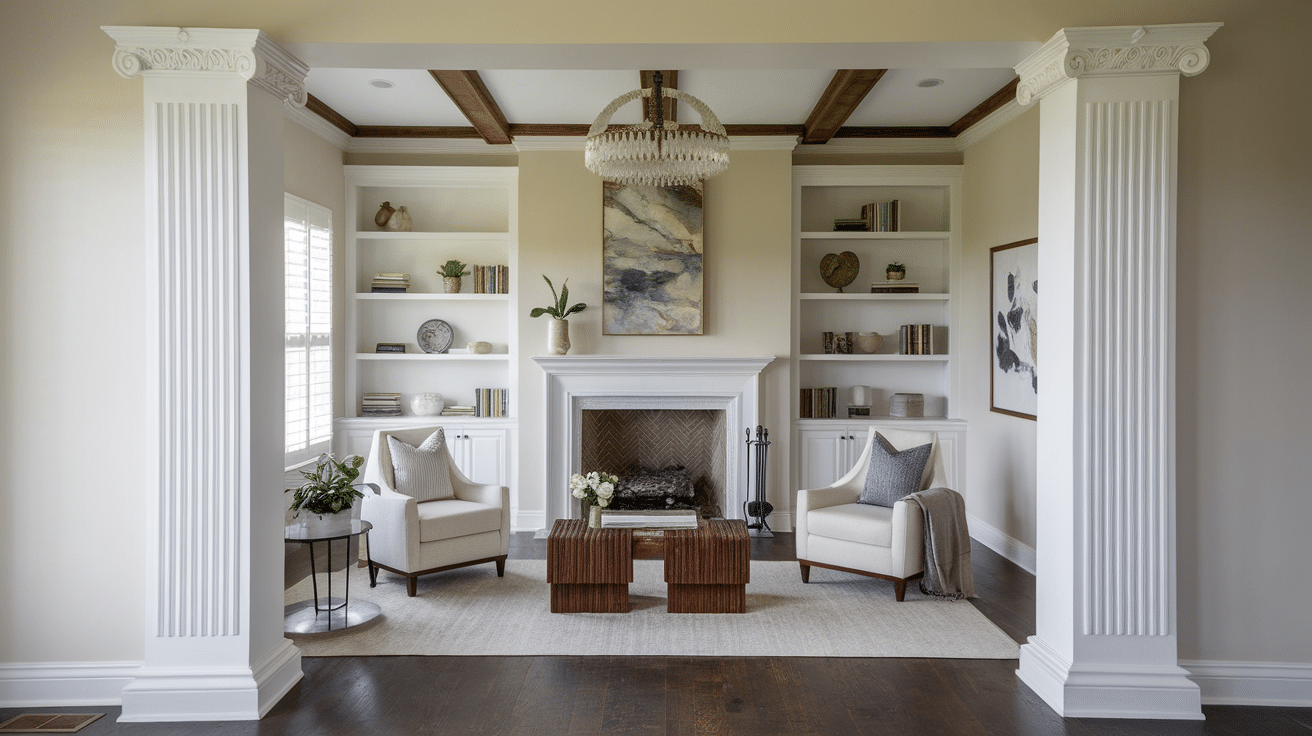
Flanking your fireplace with columns creates a classic focal point that draws attention.
This arrangement brings balance and structure, making the fireplace feel more important. The vertical lines lead the eye upward, making ceilings appear higher.
This pairing works with both traditional and modern fireplaces, adding a touch of formality to your living space.
4. Incorporating Columns in Living Rooms
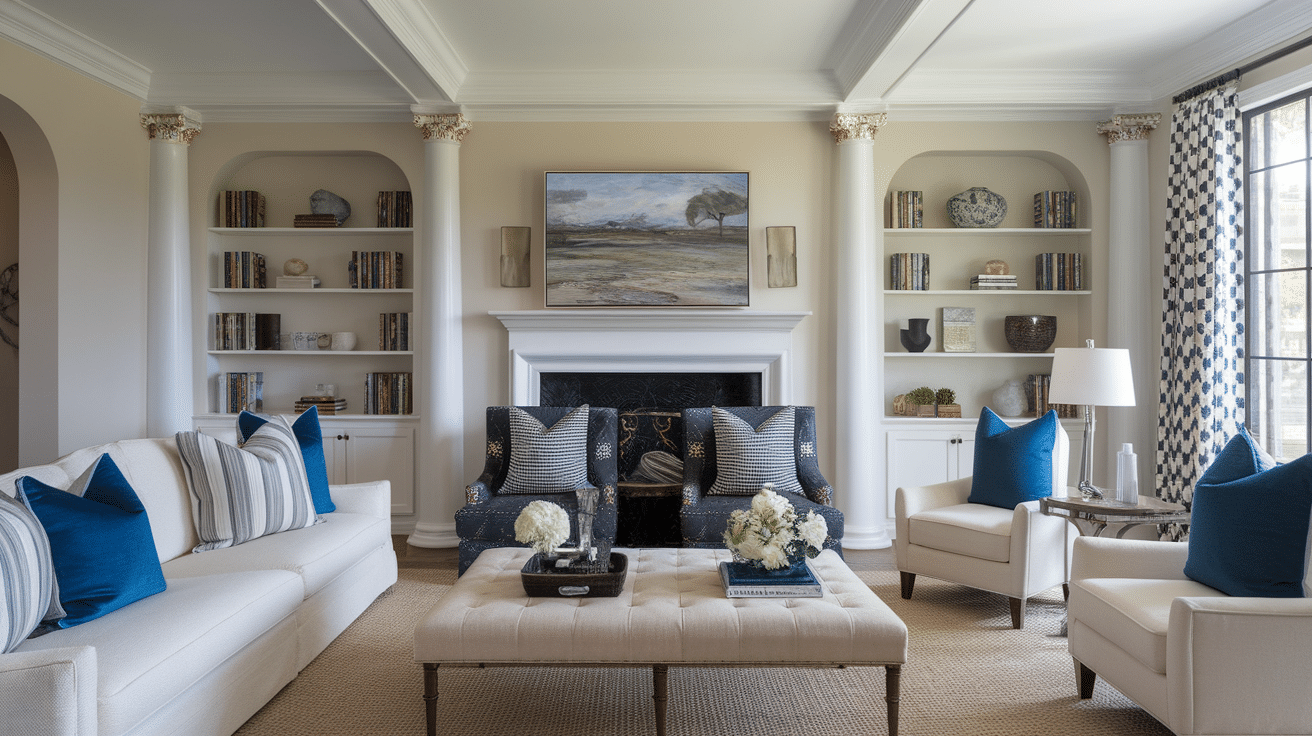
When treated thoughtfully, living room columns become design assets.
Paint them to match the walls for a subtle look or in contrast colors for visual interest.
Consider wrapping them in materials that complement your furniture.
Arrange seating to work with—not against—column placement, perhaps creating conversation areas defined by these vertical elements.
5. Columns in Dining Rooms
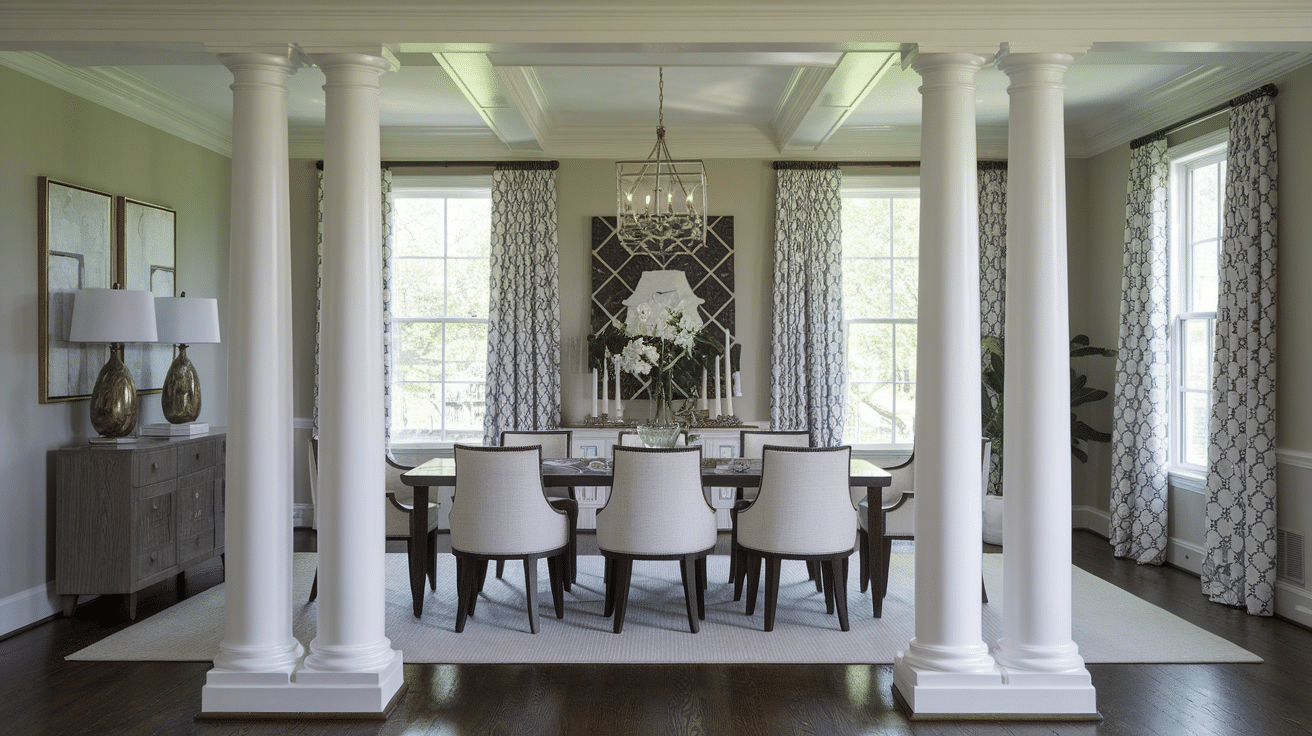
Dining room columns add structure and formality that suits eating spaces well. They can frame a large table or separate this area from adjacent rooms in open floor plans.
Columns here help define the dining space as special and distinct from everyday living areas.
Their style can echo dining furniture details for a cohesive, planned look.
6. Adding Columns to the Kitchen

Kitchen columns serve both practical and visual purposes. They can mark the boundary between cooking and eating zones or support counters and cabinets.
Some clever designs incorporate spice racks, wine storage, or small appliance nooks within column structures.
Match their finish to your cabinetry for a built-in, custom appearance.
7. Columns in Home Offices
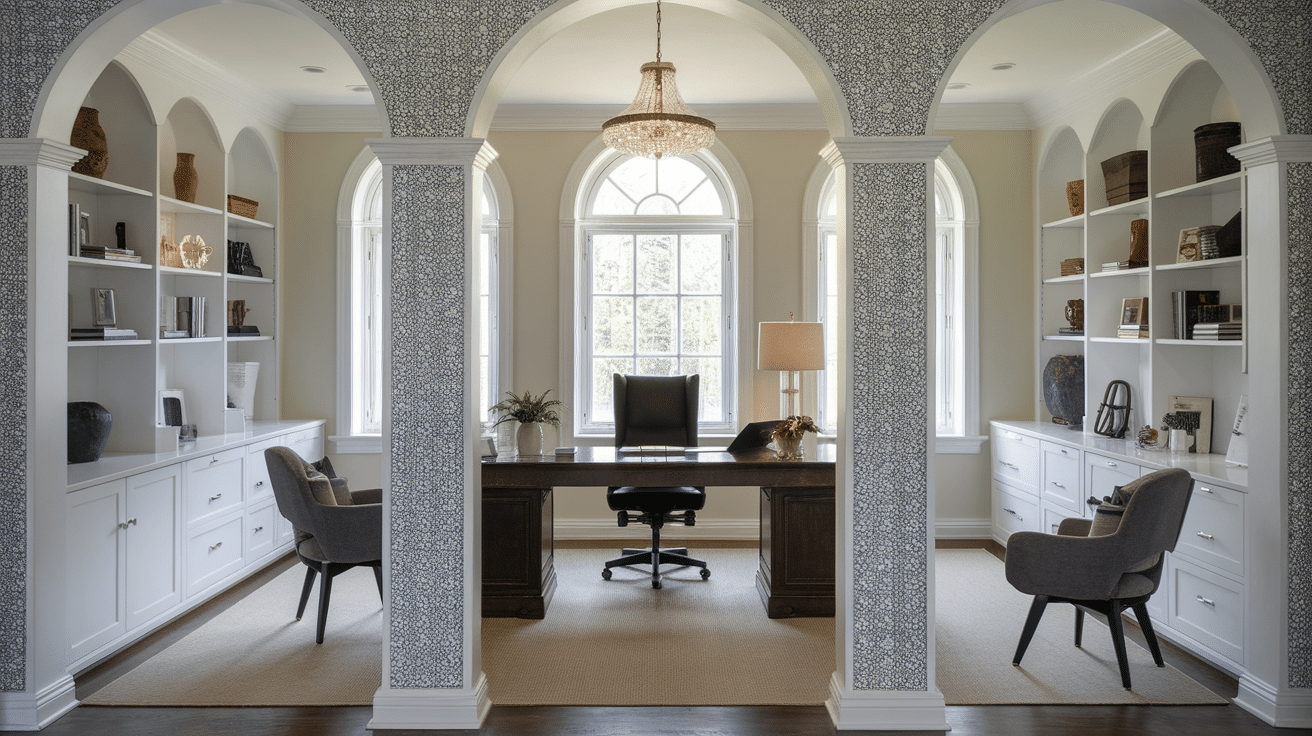
Office columns help create defined work zones, especially in multipurpose rooms.
They can separate desk areas from meeting spaces or mark the boundary between work and home life.
Consider building desks or shelving between columns, turning structural elements into functional workspace features.
Clean, simple column designs often work best in productive environments.
8. Columns as Shelving Units
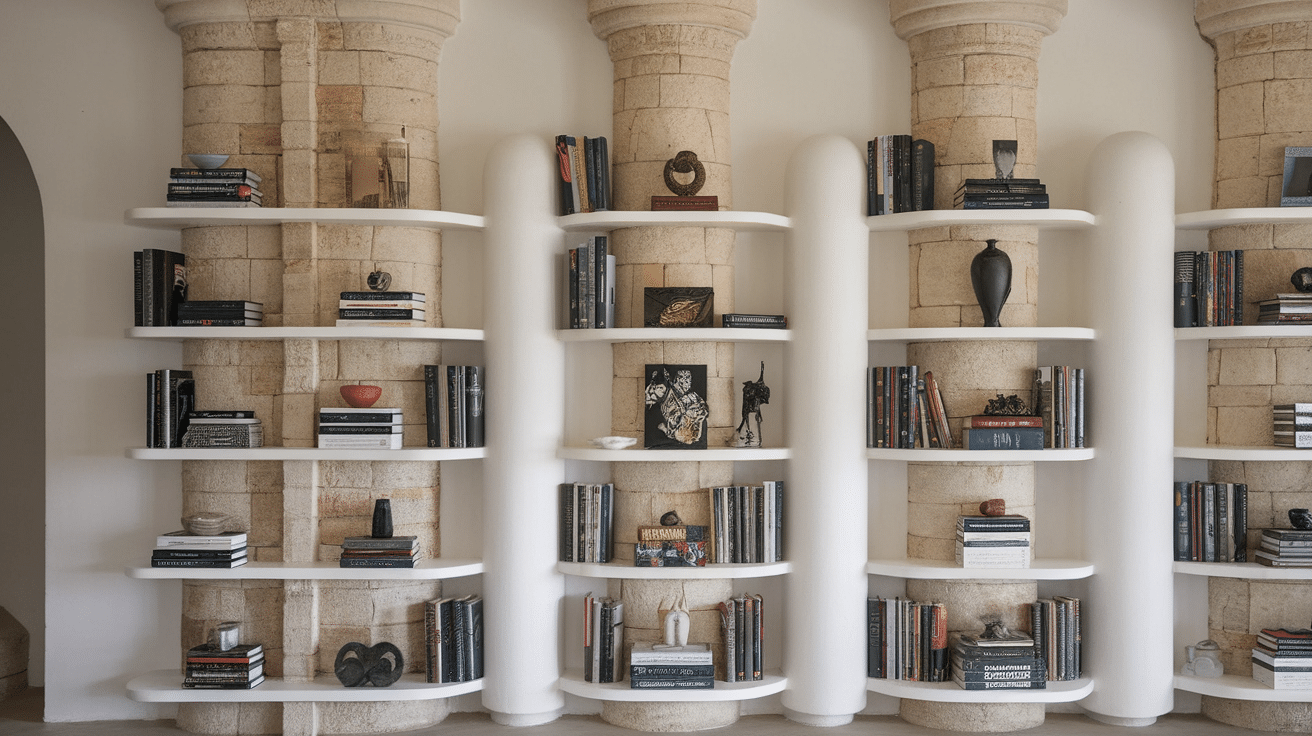
Add shelves between or around columns to update them into useful storage. Built-in bookcases that incorporate columns create display areas for books and collectibles.
Some designs include recessed niches within the columns themselves, perfect for showcasing art or special items.
This approach combines form and function, turning structural needs into practical storage solutions.
9. Columns with Built-In Lighting
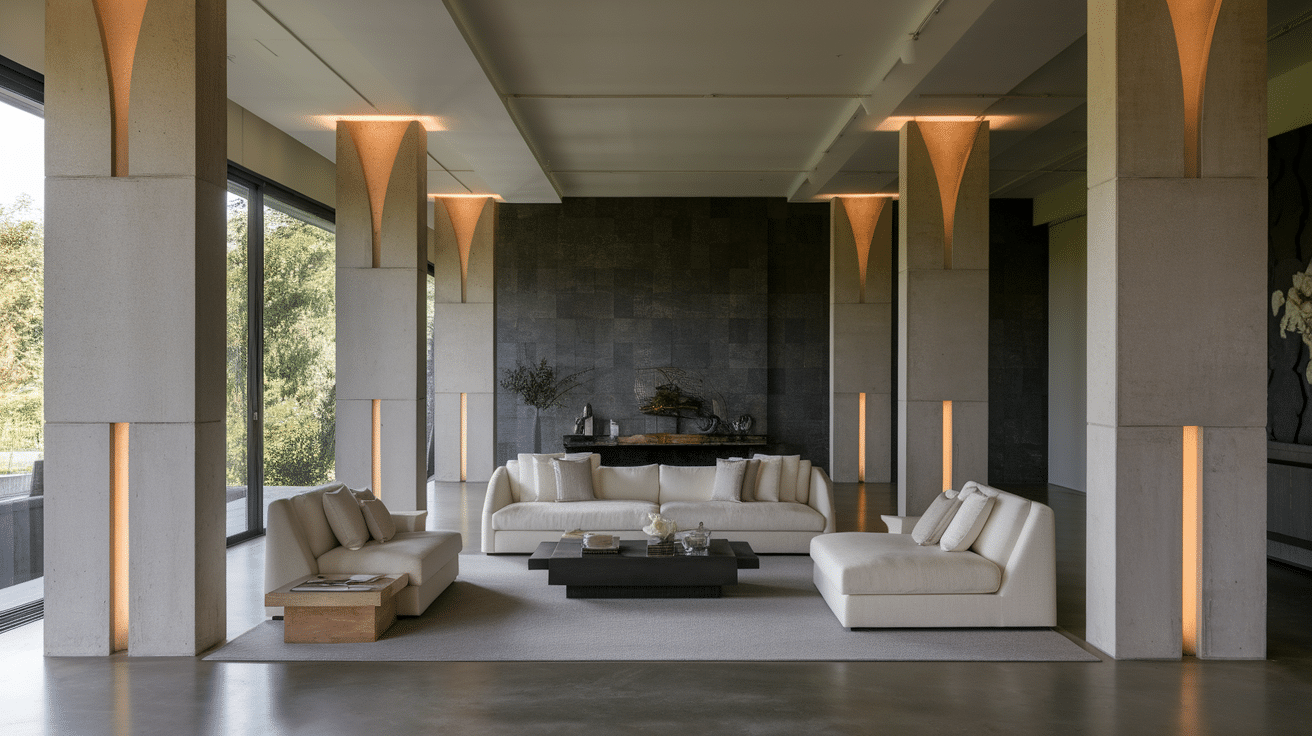
Light-equipped columns add both function and atmosphere.
Options include recessed lights within the column structure, strip lighting along edges, or sconces mounted directly to column faces.
This lighting highlights the column’s texture while providing useful room illumination.
It creates dramatic effects at night and eliminates the need for some floor or table lamps.
10. Column Supports for Staircases
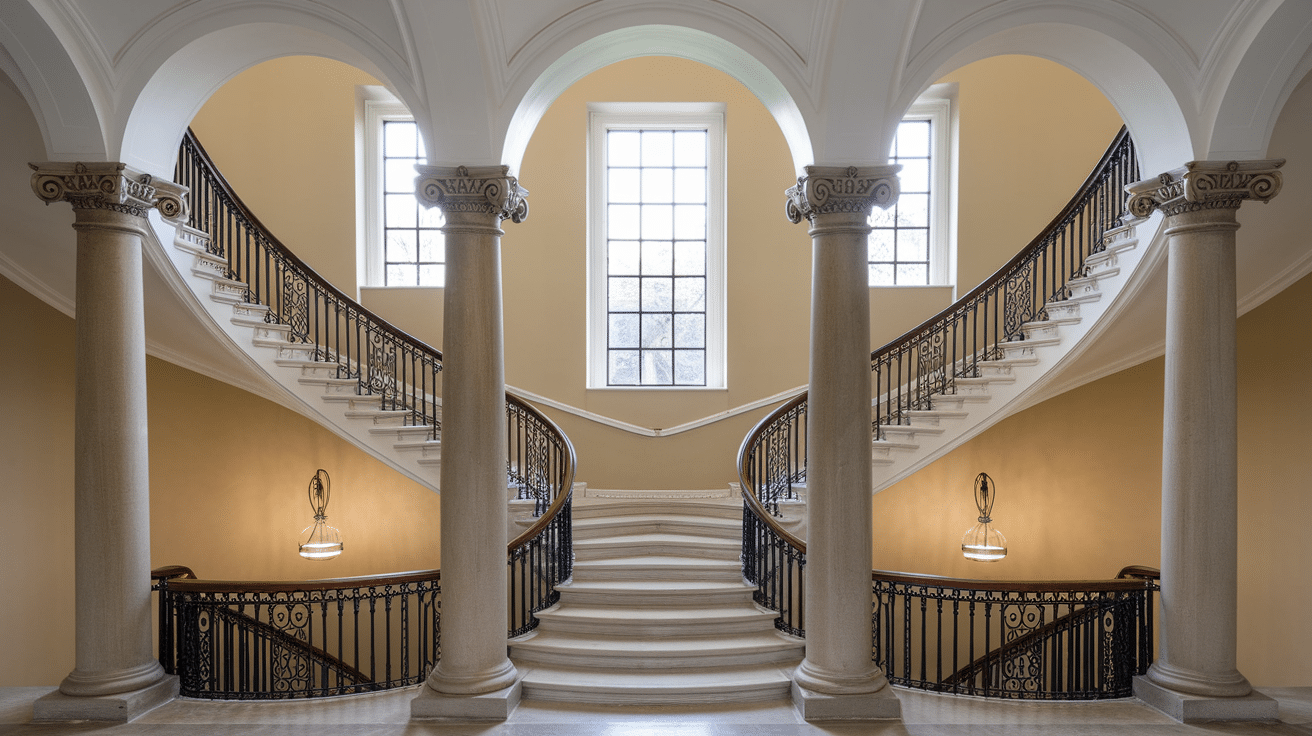
Staircase columns anchor banisters and support landings while adding visual rhythm.
Simple or ornate, they help define your staircase as an important architectural feature.
Well-designed stair columns become part of the path between floors, guiding movement and creating safety.
Their style should complement both your stairs and your overall home design.
11. Faux Columns in Smaller Spaces

Small spaces benefit from half-columns or shallow pilasters that create architectural interest without taking valuable floor space.
These slim profiles add the visual impact of columns while staying close to walls.
Properly scaled faux columns add structure and style to modest rooms without making them feel crowded or overwhelming.
12. Using Columns in Bathrooms
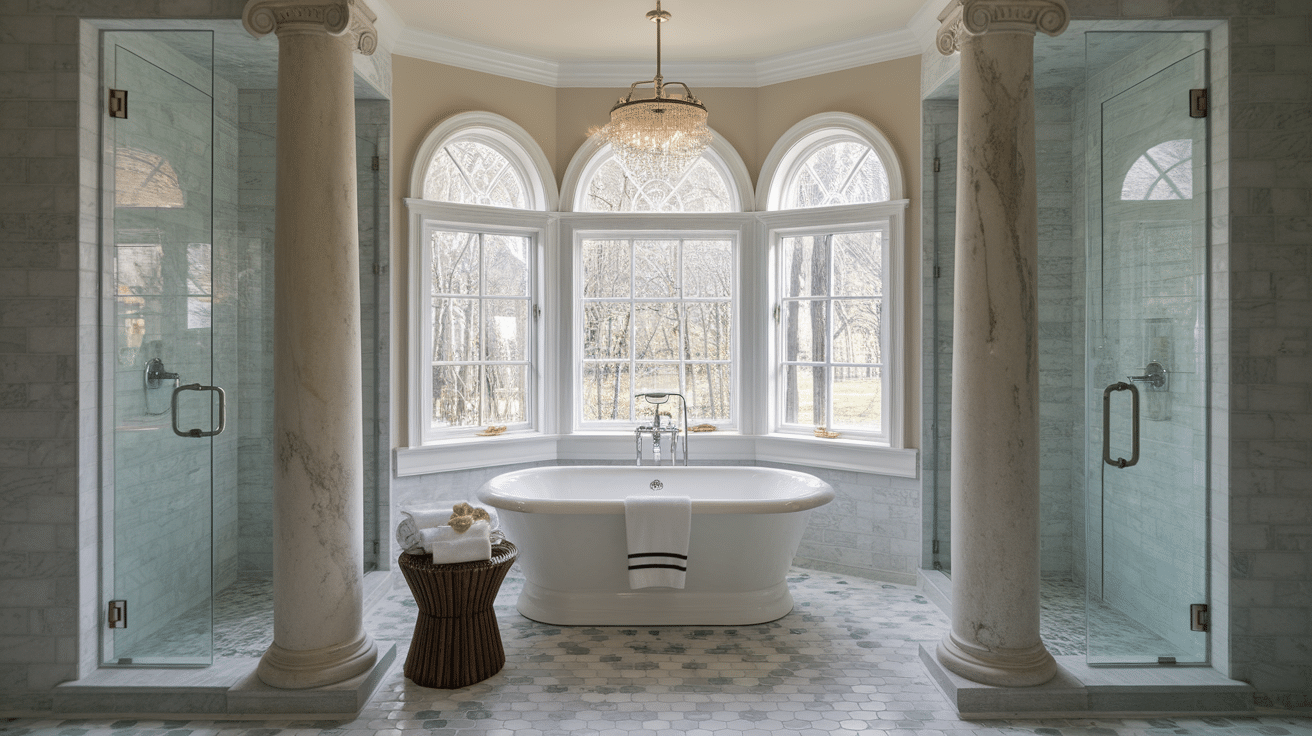
Bathroom columns add unexpected luxury to these practical spaces. They can frame a soaking tub, mark a shower entrance, or create structure in larger bathrooms.
Weather-resistant materials like stone, tile, or treated wood resist moisture while adding visual weight.
Consider columns with built-in storage for towels or bath products for added function.
13. Column Cladding for a Stylish Look
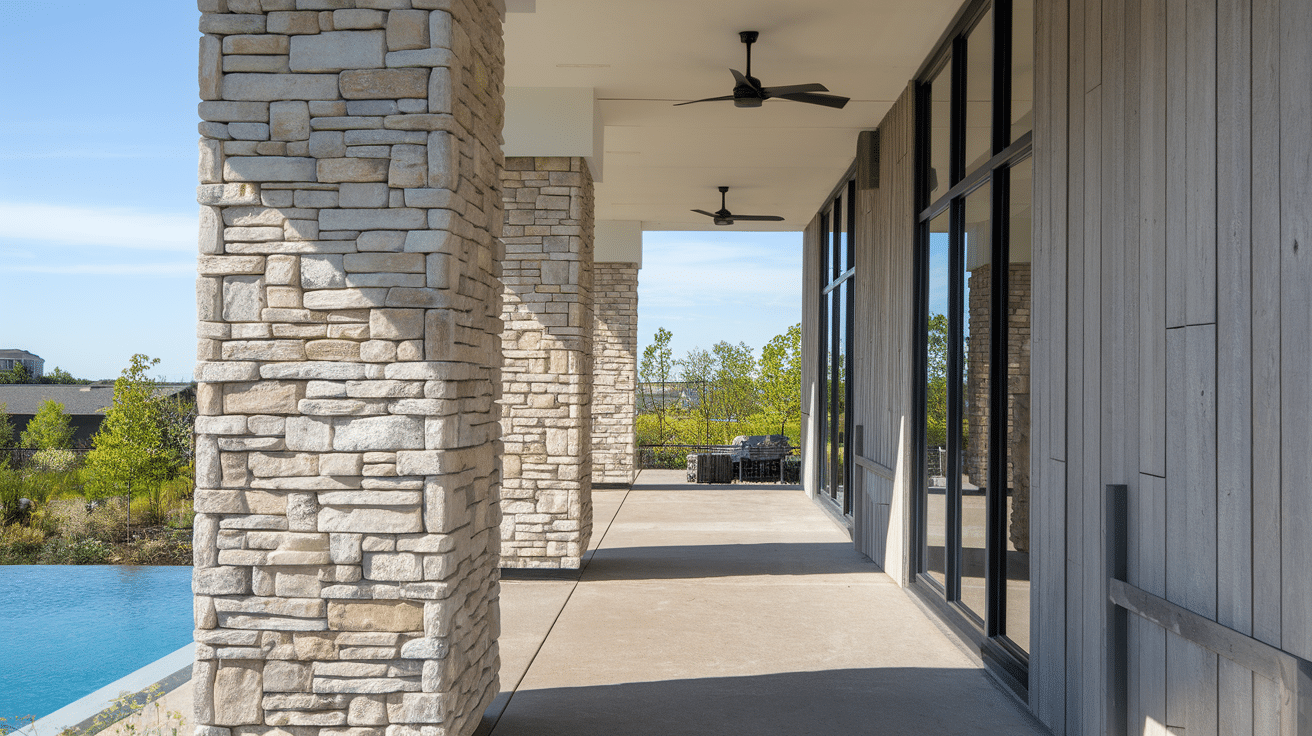
Update plain structural columns with decorative cladding that changes their appearance.
Options include stone veneer, wood panels, tile, metal sheeting, or textured wall coverings.
This approach lets you match columns to your design style without major construction, effectively hiding supports that might not match your vision for the space.
14. Outdoor Columns for Indoor Spaces
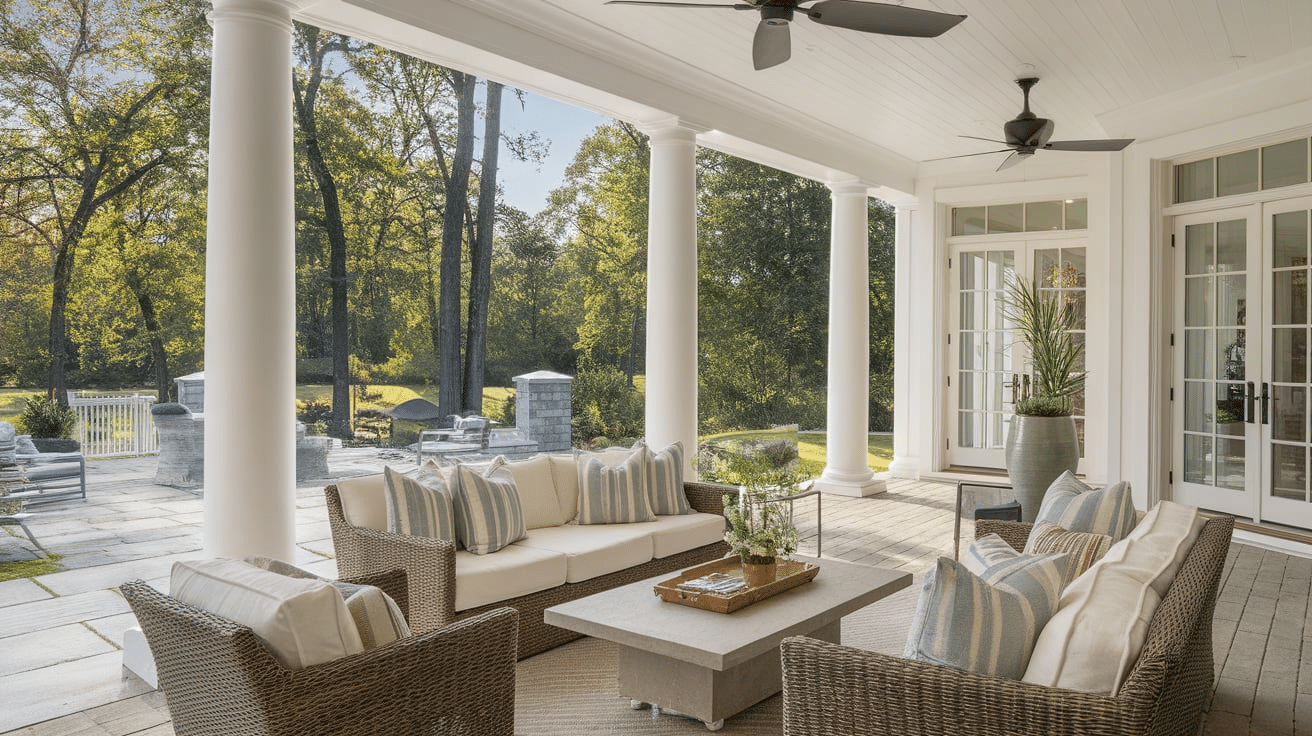
Bring outdoor column styles inside to create unique spaces with natural connections.
Stone columns or those with leaf motifs can make sunrooms and garden-facing areas feel linked to the outdoors.
This approach works especially well in homes with indoor-outdoor living spaces, creating smooth transitions between these areas.
15. Columns in Home Theaters
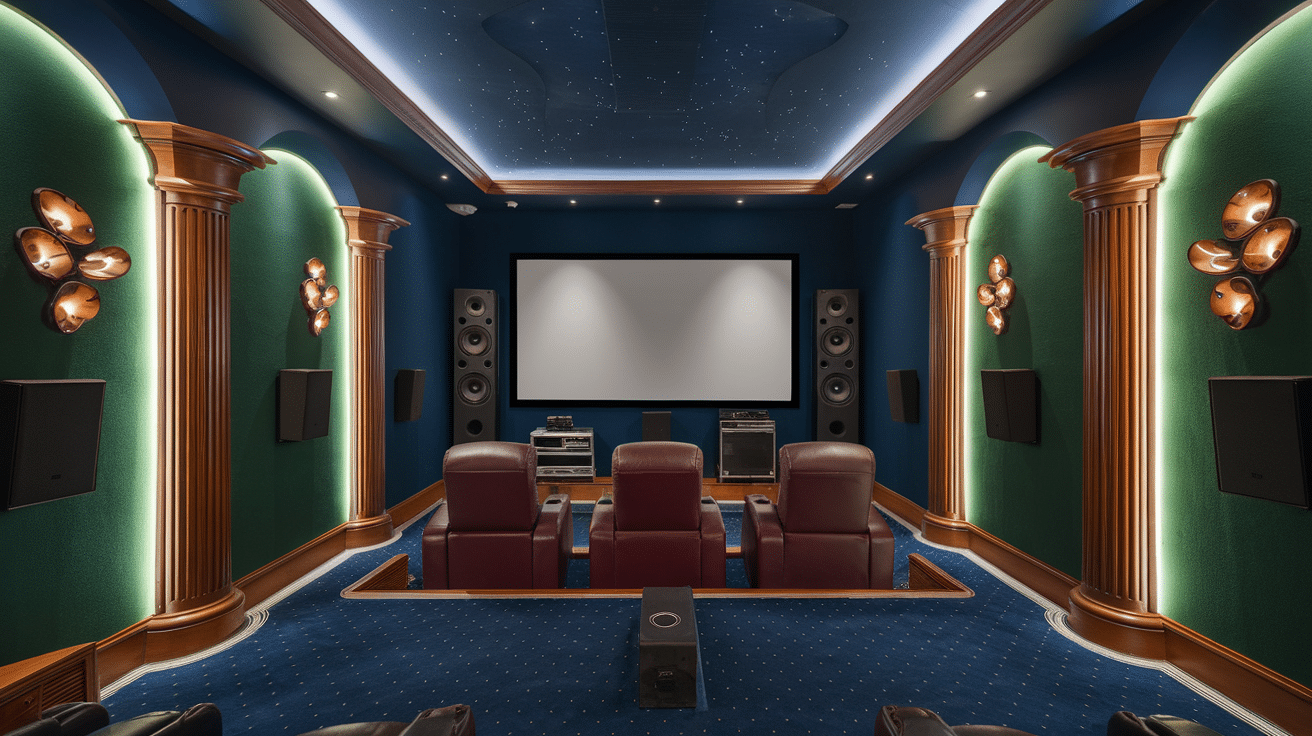
Home theater columns can house speakers and wiring while enhancing the cinematic atmosphere.
Their placement can improve room acoustics while referencing classic movie palaces.
Consider columns with fabric panels to help with sound absorption or ones with built-in lighting for that true theater experience during movie nights.
16. Incorporating Column Details in Hallways
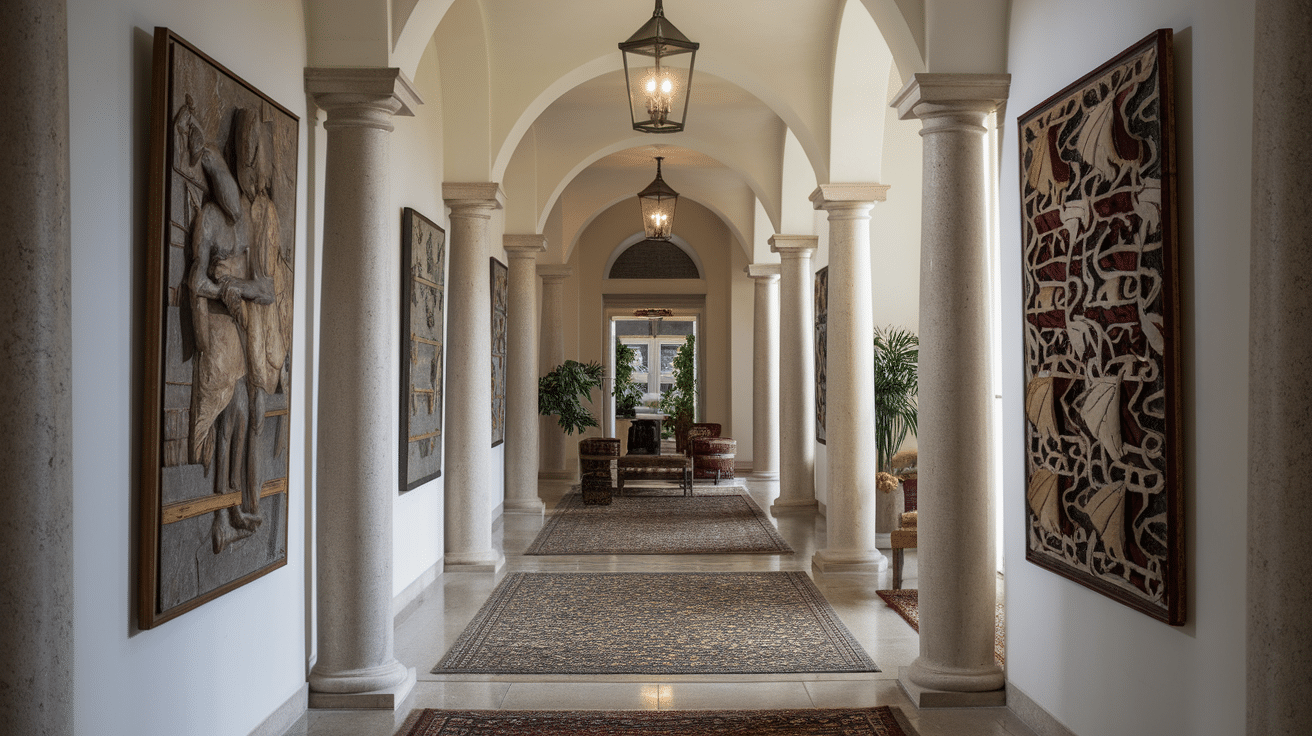
Hallway columns break up long corridors and create visual rhythm in these transitional spaces.
They can mark doorways, create nooks for small tables or art displays, or add architectural interest to otherwise plain passages.
Even slim half-columns placed at regular intervals add depth and character to hallway walls.
17. Creating a Column Focal Point in Bedrooms
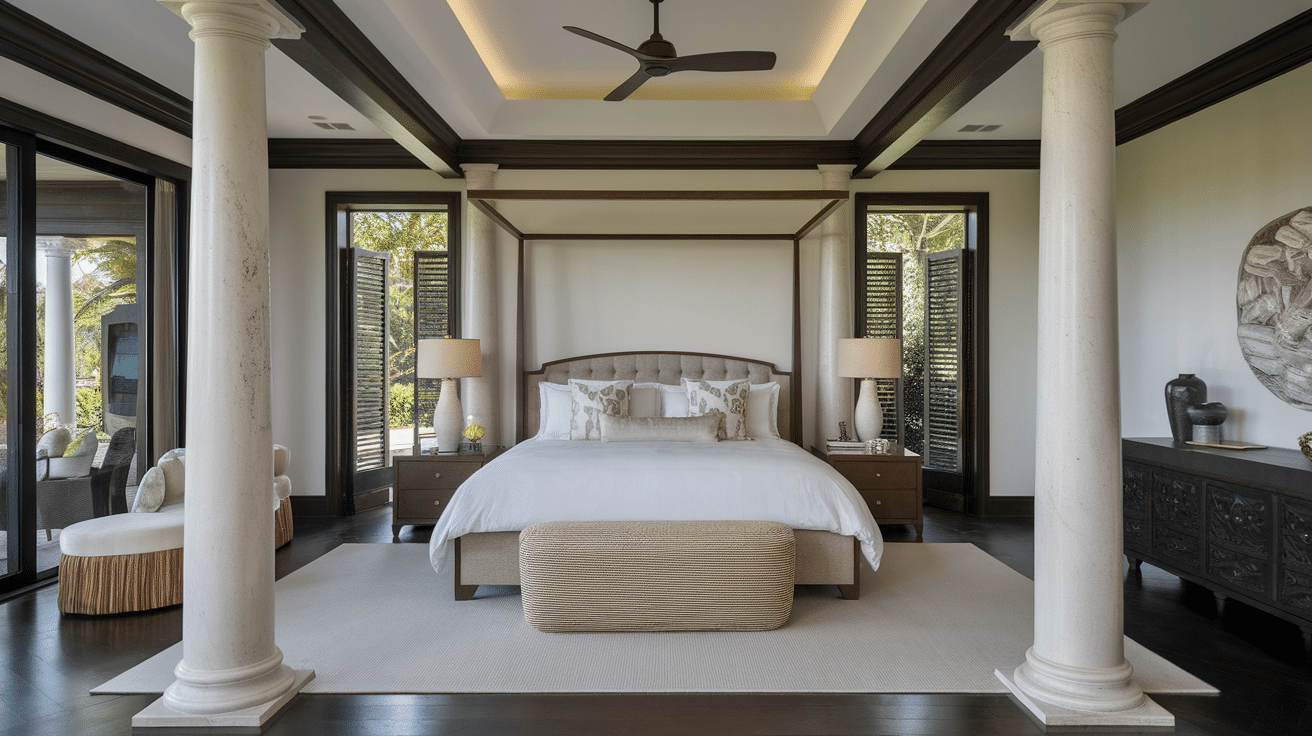
Bedroom columns can frame headboards, create canopy structures, or define sitting areas within larger suites.
They add a sense of luxury and permanence to sleeping spaces.
In master bedrooms, matched pairs flanking the bed create a hotel-like feel of structured elegance that elevates the room beyond basic furnishings.
18. Integrating Columns into Multi-Story Spaces
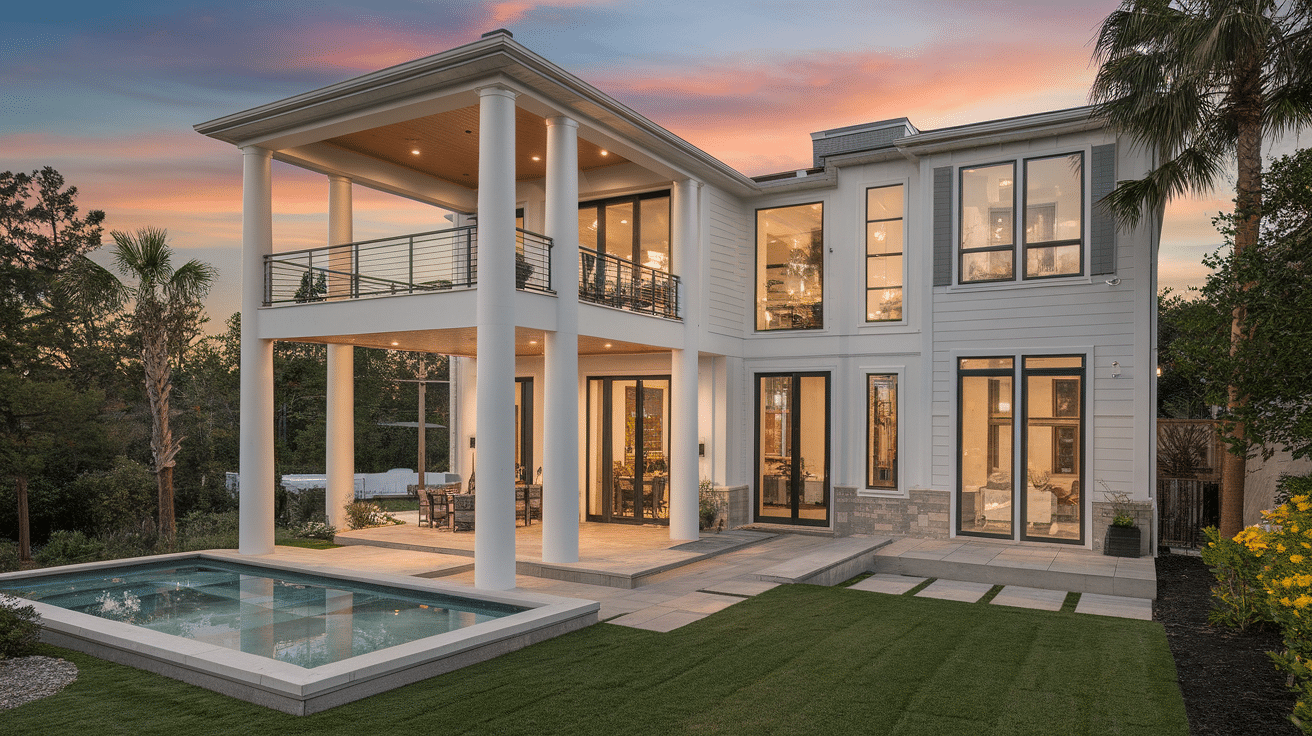
In homes with open, two-story areas, columns create visual connections between levels. They guide the eye upward and provide scale to these larger volumes.
When used consistently between floors, columns bring unity to these expansive spaces.
Their vertical lines emphasize ceiling height while providing necessary structural support in an aesthetically pleasing way.
19. Repurposing Old Columns for Modern Design
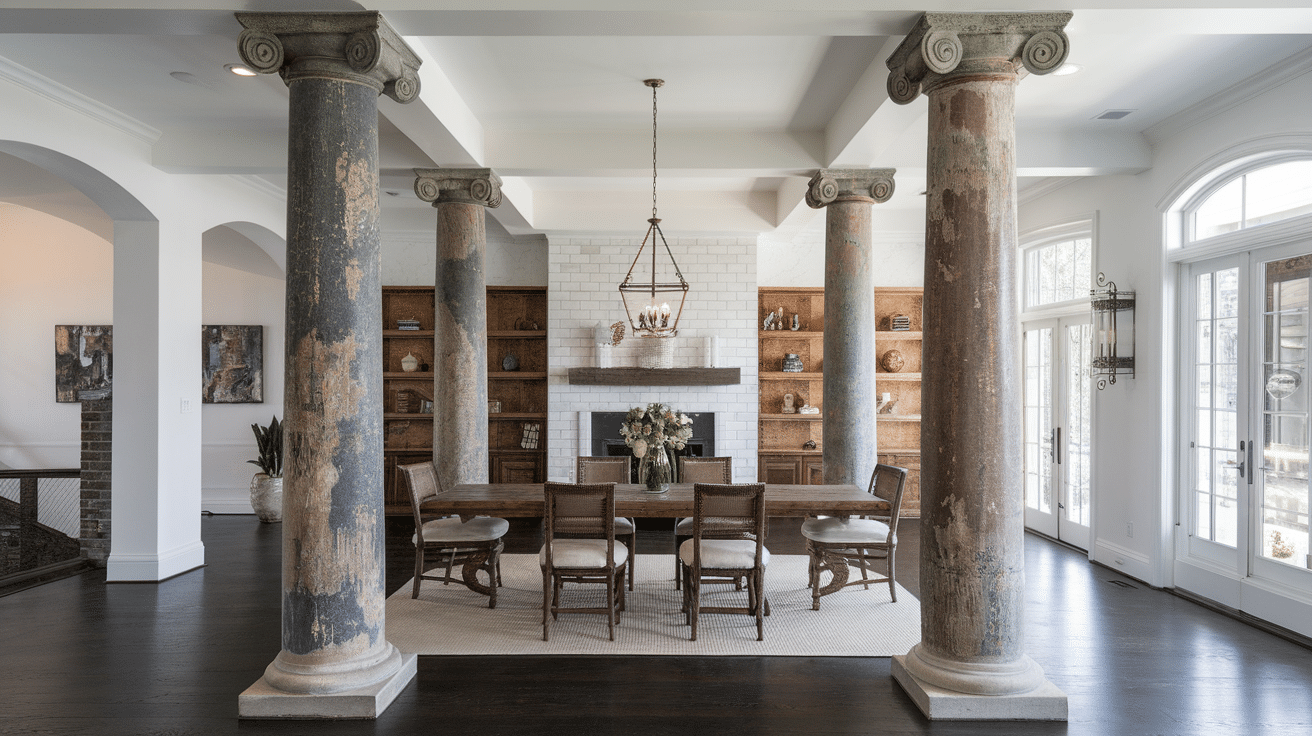
Salvaged columns from older buildings can become amazing focal points in contemporary spaces.
Their weathered patina and historical details add character amid modern furnishings.
Consider using them as standalone art pieces, repurposing sections as table bases, or installing them in unexpected locations like bathrooms or kitchens for textural contrast.
20. Adding Columns Around Doors or Windows

Framing doors or windows with columns creates stately, defined openings with architectural importance.
This treatment draws attention to views or entryways and adds visual weight to wall openings.
Depending on the emphasis you want to create, the columns can be subtle, matching wall colors, or stand out as contrasting elements.
21. Mixing Columns with Archways
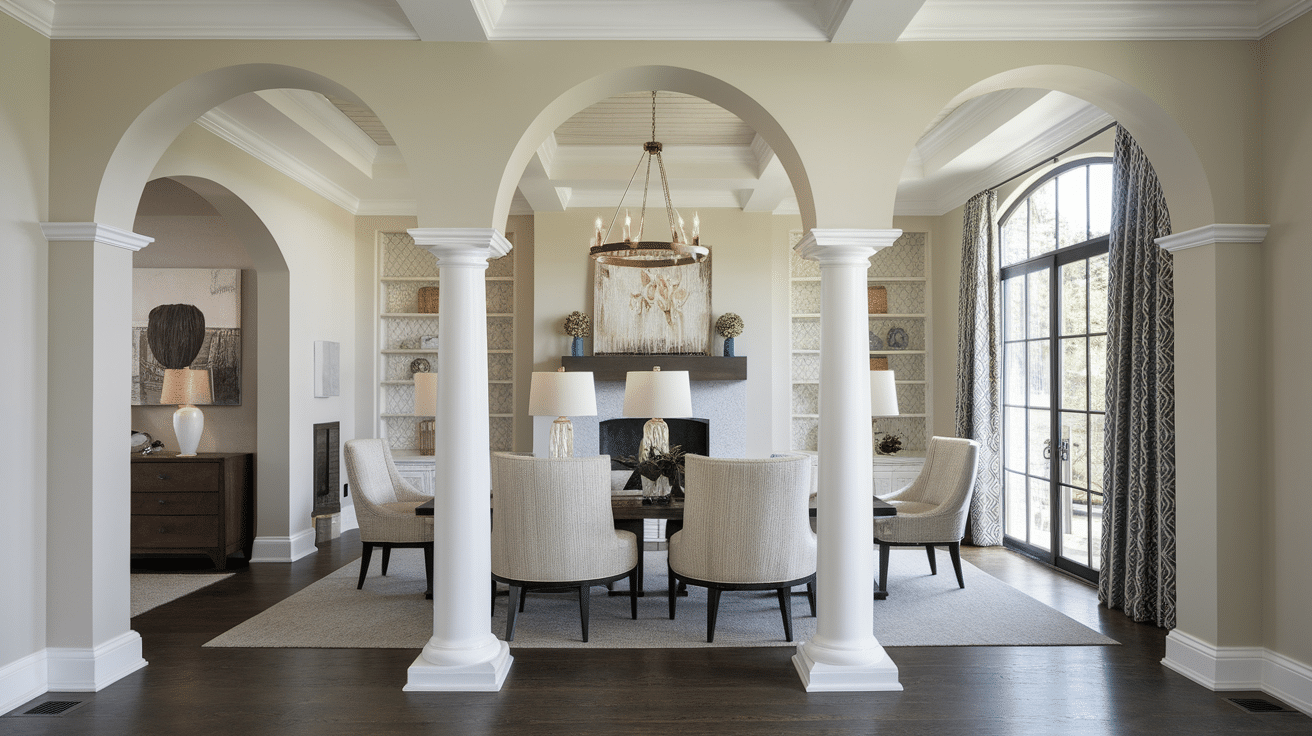
Columns supporting arched openings create classic transitions between rooms that feel both open and defined.
This pairing draws from traditional architecture but works in many modern contexts, too.
It adds height, depth, and a sense of permanence to doorways while maintaining good sight lines between spaces.
22. Use Columns to Frame a Bar Area
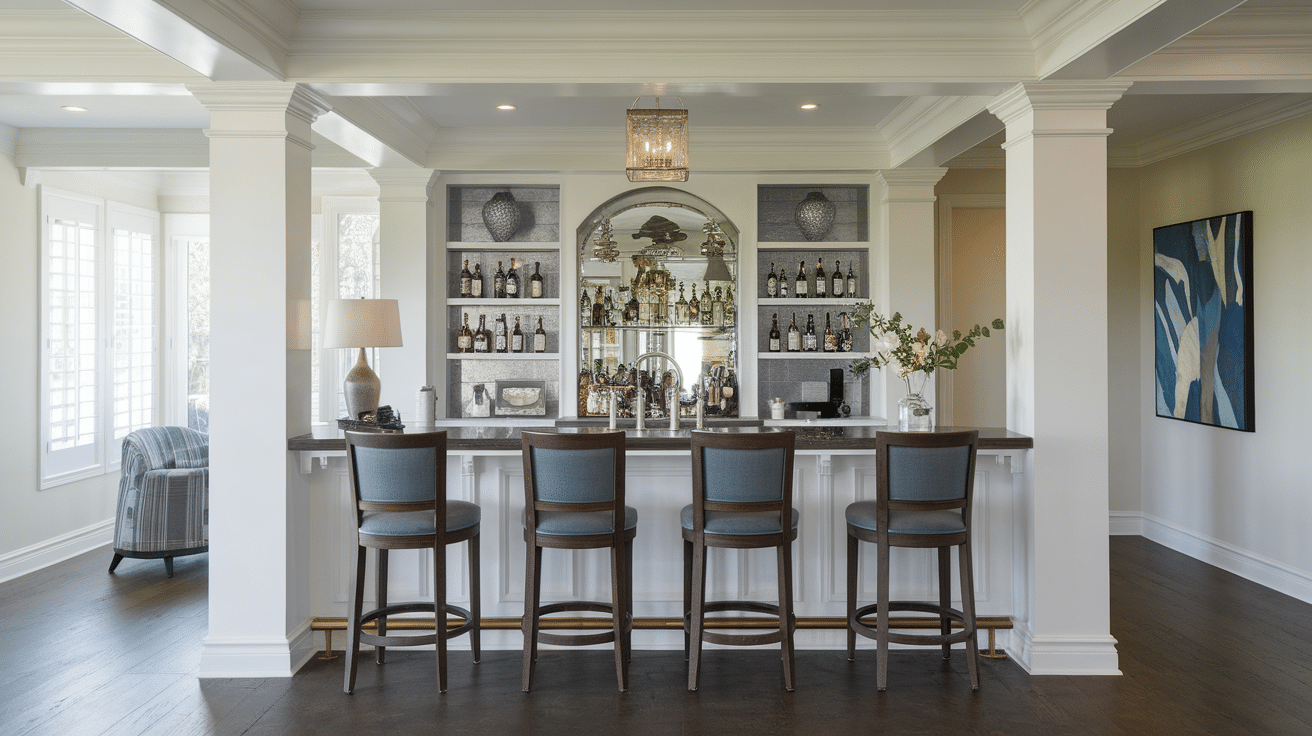
Home bar columns mark this special area as distinct from the surrounding spaces.
They can support countertops, create natural endpoints for seating areas, or house built-in wine racks and glass storage.
The vertical elements add structure to what might otherwise feel like just another counter, helping define the bar as a special gathering spot.
23. Columns as a Feature in Mudrooms
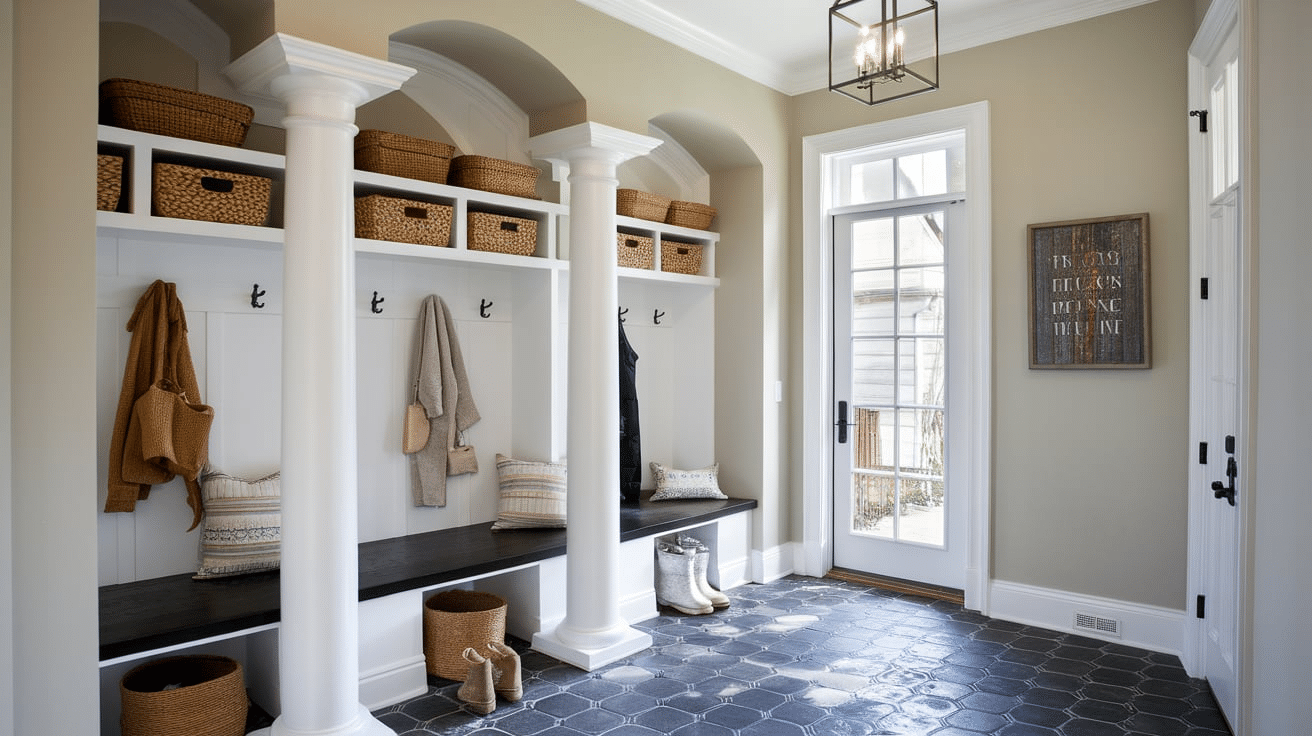
Mudroom columns bring architectural detail to these often-overlooked spaces.
They can mark the transition from outside to inside, support bench seating, or create natural divisions for coat storage and shoe areas.
Even in these practical spaces, well-chosen columns add a touch of style that welcomes family members home.
24. Support Columns in Loft Spaces
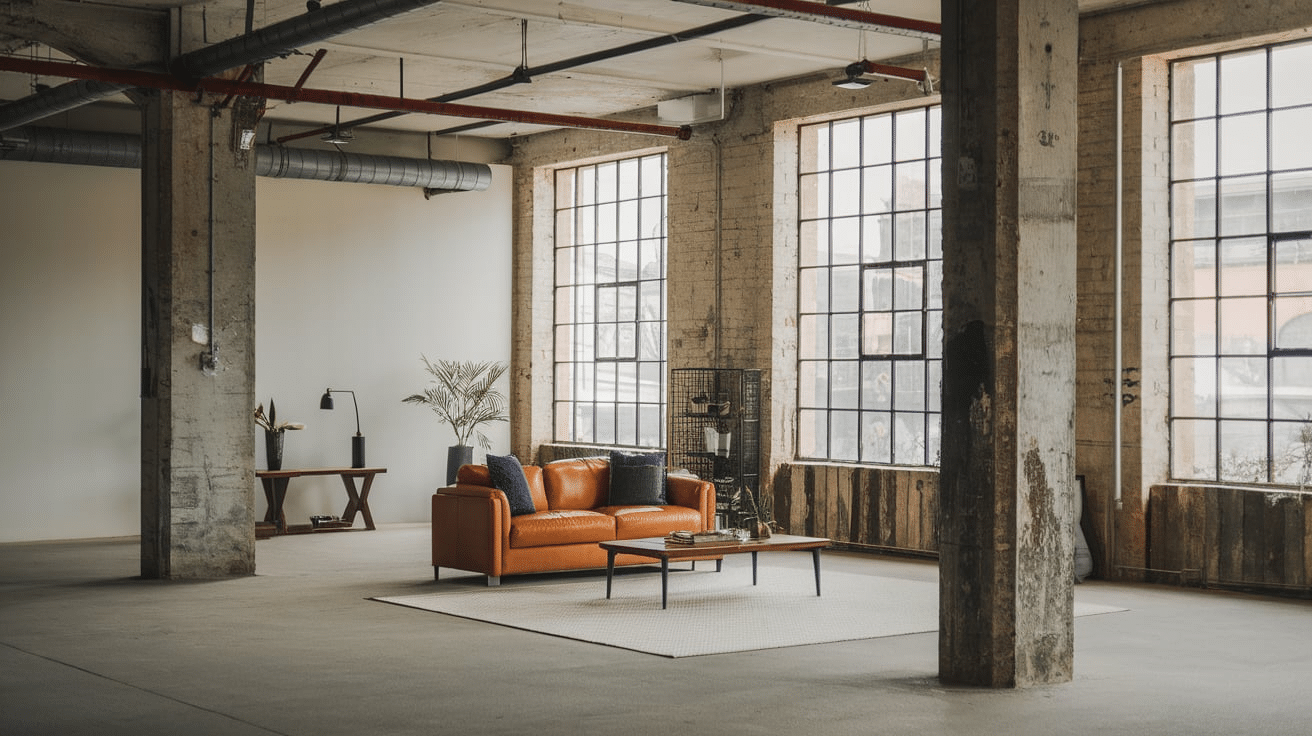
Exposed support columns contribute to the industrial aesthetic in loft-style homes.
Instead of hiding these structural elements, highlight them with contrasting paint colors or complementary materials.
Their honest functionality becomes part of the design statement, working with other raw elements like exposed brick or ductwork.
25. Create Symmetry with Paired Columns
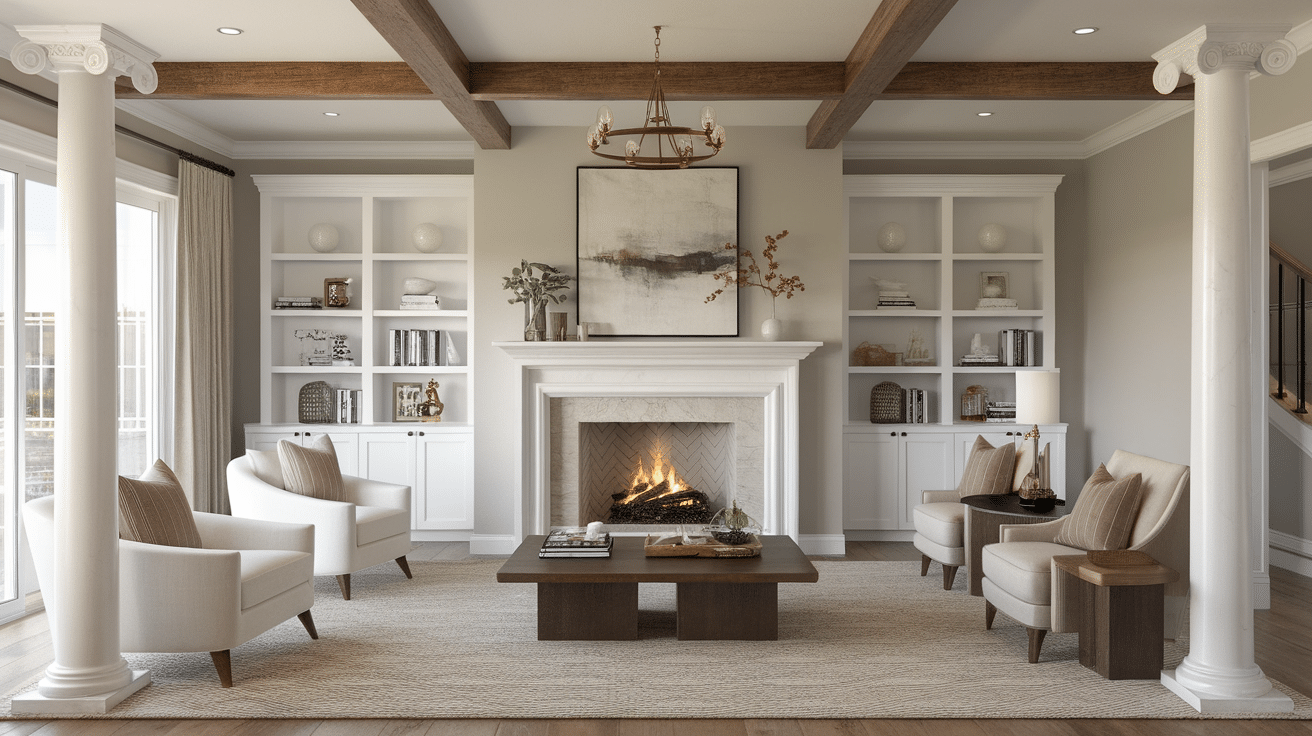
Matched column pairs create balance and formality in interior spaces.
Place them on either side of focal points like fireplaces, entryways, or windows to frame these features with classical symmetry.
This arrangement brings a sense of order and intention to room layouts while guiding the eye toward important design elements.
26. Minimalist Column Designs for Modern Spaces
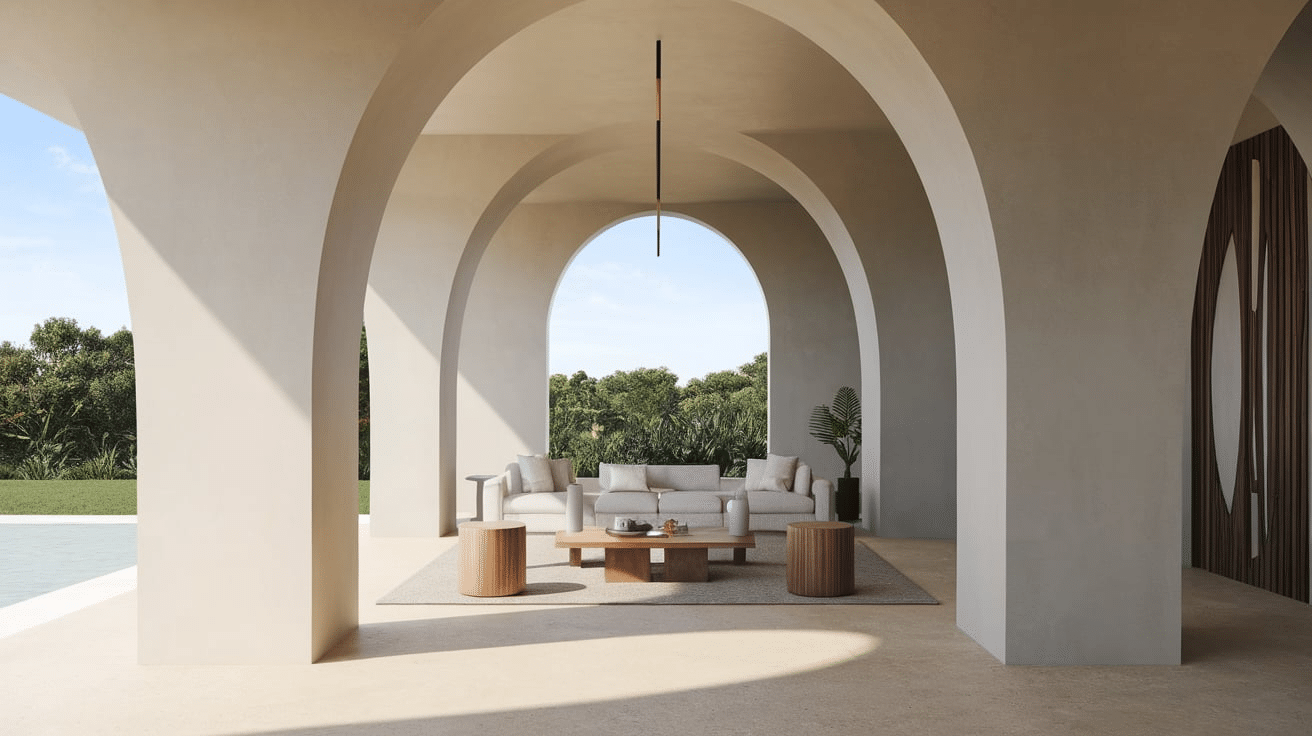
Clean-lined, simple columns without ornate details suit modern homes perfectly.
Square or round columns with minimal caps and bases provide structure without visual clutter.
These understated designs often work best in contemporary spaces where their pure forms can be appreciated against simple backgrounds of glass, concrete, or smooth walls.
27. Statement Columns with Bold Colors or Patterns

Turn columns into conversation pieces with unexpected finishes.
Paint them in striking colors that contrast with the walls, wrap them in patterned wallpaper, or cover them with mosaic tiles.
This approach turns purely functional elements into artistic statements that draw the eye and express personality in your home design.
Column Materials and Finishes
The material you choose for your interior columns greatly impacts both their function and appearance.
From classic wood to modern alternatives, each option brings its benefits, costs, and visual effects to your home design.
Understanding these choices helps you make decisions that fit your style, budget, and practical needs.
Wood Finishes for Traditional Columns
Wood columns bring natural warmth and timeless appeal to traditional spaces.
Oak offers visible grain patterns, while maple provides smooth surfaces for painting. Cherry delivers rich, reddish tones that deepen with age.
Pine serves as a cost-effective option for painted finishes. Each can be stained or sealed to protect the wood and enhance its natural beauty.
Faux Wood Columns for Budget-Friendly Projects
Faux wood columns provide the look of real wood without the cost or maintenance. Made from PVC, polyurethane, or composite materials, these lightweight options resist warping, cracking, and insect damage.
They come ready to paint and install, often with hollow centers that fit easily over existing supports. Many modern versions feature textures that closely mimic real wood grain.
Metallic and Resin Columns for Modern Interiors
Contemporary spaces benefit from non-traditional column materials like steel, aluminum, resin, and fiberglass.
Metal columns add industrial flair with clean lines and reflective surfaces. Resin and fiberglass options come in countless shapes and finishes while weighing less than stone or concrete.
These materials typically need minimal upkeep and can withstand changing indoor conditions.
Choosing the Right Material for Your Space
Select column materials based on your room’s purpose, style, and conditions. Consider durability needs for high-traffic areas and moisture resistance for kitchens or bathrooms.
Match columns to existing elements like flooring and trim for a cohesive look. Weigh initial costs against long-term maintenance requirements.
Think about installation complexity, and you need structural support or purely decorative elements.
Practical Considerations
While columns can add significant beauty to your home, several practical factors must be considered before installation.
From dealing with existing structural columns to budget planning, these considerations help ensure your column project succeeds both functionally and visually.
Hiding Load-Bearing Columns
Simple solutions can make structural columns more attractive.
For example:
- You can box them in with drywall or wood panels that match your walls.
- Build bookshelves around them to add useful storage.
- Depending on your style, you can cover them with wood, stone, or modern panels.
- Remove extra trim that draws attention to them when you want them to blend in.
Column Placement and Spacing Tips
Column location affects both function and style:
- Use them to split open spaces into different areas without full walls.
- Keep multiple columns evenly spaced.
- Frame entrances with columns to make them look more important.
- Choose column sizes that fit your room scale.
- Place them where they won’t block views or walking paths, and plan your furniture layout with columns in mind.
The right planning turns necessary supports into design features that improve your home’s look.
DIY Column Ideas and Installation Tips
Many column projects work well as DIY undertakings with basic tools and skills.
- Pre-made column wraps offer the simplest installation.
- Use a level consistently to ensure perfect vertical alignment.
- Secure non-load-bearing columns to both the floor and the ceiling for stability.
- Choose lightweight materials like PVC for easier handling.
- Always follow manufacturer guidelines and never modify load-bearing structures without professional help.
Conclusion
Interior columns are powerful design elements that can update the look and feel of any room. When used thoughtfully, they add structure, style, and character to even the simplest spaces.
From classic wooden designs to sleek modern styles, columns provide both functional and visual benefits for your home.
Take time to analyze your rooms and identify areas where columns can improve flow, define spaces, or add architectural appeal.
Begin with smaller projects like decorative column wraps before progressing to more intricate installations. With careful planning, your home’s columns can become its most distinctive and admired features.
Want more design tips? Read our other blogs to inspire your next home project.

